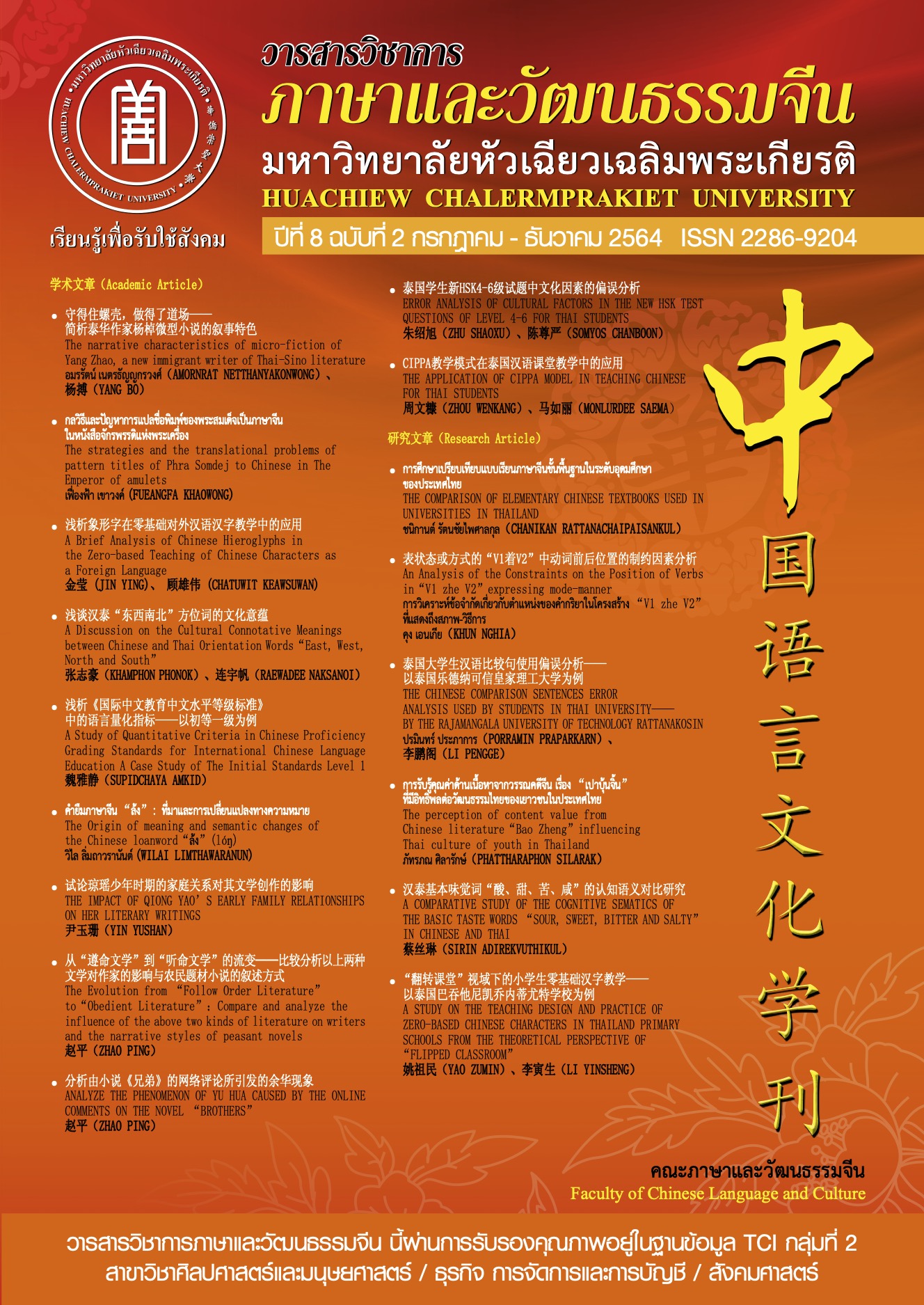The Evolution from "Follow Order Literature " to " Obedient Literature ": Compare and analyze the influence of the above two kinds of literature on writers and the narrative styles of peasant novels
Keywords:
obeyed literature, peasant theme, narrative discourseAbstract
ABSTRACT
In the development and evolution of Chinese literature, the discourse mode and narrative style of peasant themes have their own literary characteristics in different historical years and social changes in China. The different modes of discourse and narration in these works reflect certain social changes and cultural thoughts at the time, and to varying degrees are affected by the mainstream social and cultural thoughts of the era in which the author lived. The thesis explains the historical background and the relationship between politics and literature of the emergence of "follow orders literature" and "obedient literature", compare and analyze the different characteristics and literary creation consciousness between the two, and the influence of politics on literature.
References
鲁迅. 南腔北调集(自选集)自序[M].//鲁迅选集:第5卷.北京:中国文史出版社.2002: 23-24
鲁迅. 呐喊·自序[M].//鲁迅全集:第1卷.北京:中国文史出版社.2002: 4-6
鲁迅.而已集·革命时代的文学[M].//鲁迅全集: 第3卷.北京:人民文学出版社. 1981年:418
山西大学合编.赵树理文集(1-4卷)[M].工人出版社.1980: 1827
董大中.赵树理写作生涯[M].天津:百花文艺出版社.1984:153,172
蒙万夫.柳青写作生涯[M].天津:百花文艺出版社,1985:81,95
孙达佑 梁春水编.浩然研究专集[M].天津:百花文艺出版社.1994:18
浩然.我的人生:浩然口述自传[M].北京:华艺出版社. 2000: 277
赵树里.《三里湾》写作前后[N].文艺报,1955,(13),(24)
孙达佑.梁春水编. 浩然研究专集[M].天津:百花文艺出版社.1994:26,24
赵树理.当前创作中的几个问题[D]. 赵树理研究资料编辑组.中国当代文学研究资料赵树理专集{C}.上海:复旦大学中文系.福建人民出版社:141-142
孙达佑, 梁春水编.浩然研究专集[C].天津:百花文艺出版社.1994:191,200
鲁迅.三闲集·文艺与革命[M].// 鲁迅全集: 第四卷.北京:人民文学出版社.1981: 84
Downloads
Published
How to Cite
Issue
Section
License
บทความที่ได้รับการตีพิมพ์เป็นลิขสิทธิ์ของวารสารภาษาและวัฒนธรรมจีน มหาวิทยาลัยหัวเฉียวเฉลิมพระเกียรติ
บทความใน “วารสารวิชาการภาษาและวัฒนธรรมจีน” เป็นทรรศนะของผู้เขียนโดยเฉพาะ กองบรรณาธิการไม่มีส่วนในความคิดเห็นในข้อเขียนเหล่านั้น




